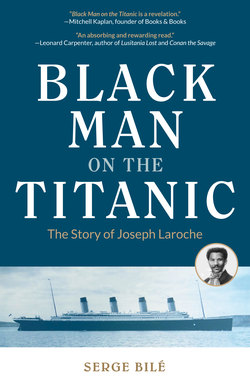Читать книгу Black Man on the Titanic - Serge Bile - Страница 28
На сайте Литреса книга снята с продажи.
ОглавлениеWhen rocks, dirt, and rotten fava beans slipped through, Euzélie separated the good from the bad and then reconditioned the merchandise, which she sold at her Kay-Kafé on Rue 8. The store was patronized by a specialized client base.
“There was a huge scale inside the store to weigh the bags. She sold her coffee to big local enterprises and to exporters,” historian Georges Michel explains.
“She was also visited by European buyers, French and mostly German,” Christina Schutt adds.
Coffee was at the time Haiti’s main asset, and even its “only real currency,” according to the French consul general. In 1888, two years after Joseph Laroche’s birth, the country exported over seventy-five million pounds of coffee, shipped to Le Havre. Trading with Le Havre, New York, or Hamburg allowed the local economy to remain sustainable and benefited numerous families. While the big planters could easily grow rich from the business, it was not always the case for the small farmers, however. Most of the time, they had to go through multiple middlemen to move their product. They sold the coffee through a trading network of Haitian businesswomen, also called “acrobats,” “submarines,” or “Madan sara.”36 The latter resold the coffee to speculators, who finally brought it to their customers.
According to an official report, “the distribution network was far from linear, because the producers also had direct contact with speculators when they sold them their ground coffee.” Euzélie Laroche preferred procuring directly from the source. This way, she said, everybody wins.
This complex system, put in place by a government that also collected taxes, lasted until 1996. That year, there were two hundred thousand planters, ten thousand acrobats, submarines and madan-sarah, seven hundred speculators, and seven exporters in Haiti. That’s why a minister said: “Coffee is a gold mine for everyone, except its producers.”
▪ ▪ ▪
Euzélie Laroche was born 160 kilometers from Le Cap, in the municipality of Grande Rivière du Nord37. She later moved to Le Cap with her mother, who was in search of employment, and Euzélie rapidly adapted to the rhythm of this port city. In fact, Euzélie took the plunge almost immediately, creating her own business, as she wanted independence; she refused to be like the single mothers around her whose sole occupation in life was to raise their children, alone.
In the streets of Grande Rivière du Nord, Euzélie had more than once observed merchant women selling the cheap junk they procured from some local wholesaler. She felt she had it in her to do the same—only better. Buy and sell: it was even easier in a port city like Le Cap, where trade was a tradition.
Founded in 1670 by buccaneers, Cap Français, as it was called in old times, was the heart and soul of the sugar industry. Under the whip, enslaved men and women planted and harvested sugarcane, which the masters sold for their exclusive benefit.
In January 1802, however, the tide had turned. The slaves had eventually rebelled and chased the colonizers away. Then, everything had changed. Well, almost everything.
“The violent separation of the colony from the home country was immediately followed by an embargo that put a stop to all exchange between France and Haiti,” historian Benoît Joachim says. “This greatly benefited the British, who refused to side with the Napoleonic empire and its economic strangulation of the new state.”
The British were not the only ones to take advantage of the new regime. The Germans also continued business with this small, now independent, country. Many of their nationals had been established as traders or merchants since the eighteenth century. In 1841, one of their own, Peter Gottlieb38, disembarked in Le Cap. He was nineteen years old and dreaming of adventure.
